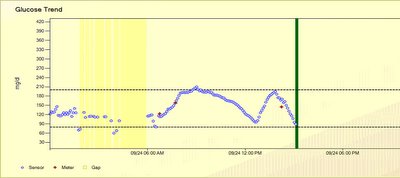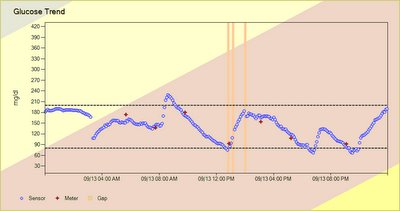Dogfight in the Emerging CGMS Market?
"Dogfight" in CGMS. According to a Reuters September 29th article by Julie Steenhuysen, this is what some analysts who monitor the Diabetes medical device market are saying about CGMS. I don't mind a good dogfight in CGMS; the more competition, the better for we type 1 diabetics, and type 2 as well: we really need these tools and the insurance industry needs to understand that; right now, they just don't get the message; their bottom line is: money, money, and more money. The more players in the market, and the more studies conducted that show the benefits of CGMS, the quicker the insurance companies will respond.
Dogfight over Features
The president of Abbott's diabetes unit, Ed Fiorentino, says:
"Better accuracy and longer-wearing sensors -- five days with the Abbott product vs. three days with the Medtronic and DexCom devices -- will give Abbott an edge."
Mr. Fiorentino may be right on when it comes to accuracy, though with DexCom I'm doing pretty well with accuracy compared to my somewhat accurate fingersticks. As far as sensor life goes, 3-days wear time is so far a minimum for me with DexCom. On the accuracy and non-calibration requirement (if you choose to use the Navigagor off-label), Abbott leapfrogs ahead of DexCom, if what abbott claims is true about completed studies and studies almost completed. DexCom had better get cooking on some new features, and stay away from the vaporware type of announcements we've seen with other companies, it's coming, it's coming, really, it is...
So we've got DexCom, MiniMed, Navigator, and now J&J jumping into the CGMS market. I am psyched!!!





